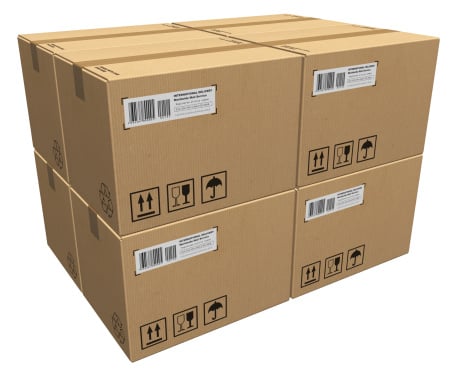More important than the news itself is the market’s reaction to the news. Wednesday FedEx Corp. (NYSE: FDX) reported earnings and full-year guidance that missed analyst expectations, and shares tumbled 3% on volume more than twice the average with over 4 million shares being traded. In context though, the numbers were really not that bad, with much of the underwhelming figures being due to new accounting procedures regarding the valuation of the company’s pension plans and to a strengthening U.S. dollar. Source: Thinkstock
Source: Thinkstock
FedEx even cited lower fuel surcharges that contributed to lower revenue, but this is really a phantom number since fuel expense decreased much more than that due to collapsing oil prices, more than offsetting that revenue loss. Net loss for the quarter was $895 million, but excluding a huge $2.2 billion accounting loss for revaluing employee pensions on a mark-to-market basis, earnings were a positive $1.3 billion. The new accounting method is as opposed to the book value method, which is more volatile, leading to less predictable earnings. By marking to market, FedEx is eliminating much of that volatility, which should streamline its next earnings statements and show a more stable trajectory.
The biggest drops that were not due to accounting procedures were mostly in international shipments, but not in volume decreases. The rise in the U.S. dollar since mid-2014 has translated to less dollar-denominated income, despite increased international activity.
ALSO READ: Merrill Lynch Adds New Stocks to Buy to Prestigious US 1 List
The only concrete sign of worry is a 53% increase in its debt burden from last year, but FedEx is hardly unique in that sense since nearly all companies are borrowing now to take advantage of extremely low interest rates before any possible rate hikes. This though is not much of problem because FedEx keeps its debt completely fixed rate, with virtually no interest rate risk, so the company may as well borrow now.
Increased capital expenditures and a plan to cut out the U.S. Postal Service from its package delivery routes puts FedEx in a good position to continue growth, and the big $2.2 billion accounting charge will likely pay off over the next year or two.
So why the big 3% drop on large volume? This says a lot more about current market conditions than it does about FedEx in particular. We are entering a seasonal period of decreased money growth that could last through October, making investors anxious to sell on any excuse and go to cash. Taking a cue from last year, October 6 is when money supply began to grow again to over $11.5 trillion from a peak of $11.353 trillion on April 14, 2014. The S&P bottomed one week later, on October 16. We can expect more exaggerated down moves like this on any less-than-spectacular earnings reports until general market conditions improve with higher money supply to feed it.
ALSO READ: 4 Merrill Lynch High Quality and Dividend Yield Stocks to Buy Now
By contrast, United Parcel Service Inc. (NYSE: UPS) as of its last filing reported similar volume increases with decreases in revenue per package for the same reasons, but without a huge multibillion dollar paper loss from accounting measures. That, and the timing of its earnings release on April 28, before money supply began to stagnate, contributed to a jump in its shares.
Taken together, the sharp drop in FedEx shares betrays more about current market weakness than it does about FedEx in particular, or even delivery services in general.
Smart Investors Are Quietly Loading Up on These “Dividend Legends”
If you want your portfolio to pay you cash like clockwork, it’s time to stop blindly following conventional wisdom like relying on Dividend Aristocrats. There’s a better option, and we want to show you. We’re offering a brand-new report on 2 stocks we believe offer the rare combination of a high dividend yield and significant stock appreciation upside. If you’re tired of feeling one step behind in this market, this free report is a must-read for you.
Click here to download your FREE copy of “2 Dividend Legends to Hold Forever” and start improving your portfolio today.
Thank you for reading! Have some feedback for us?
Contact the 24/7 Wall St. editorial team.



